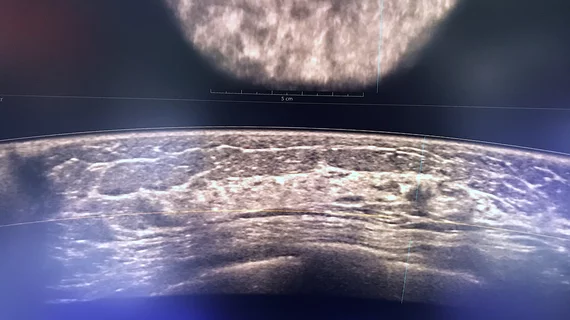Commercially available AI systems excel in cancer detection in dense breasts
The combination of AI with digital mammography (DM) and automated 3D breast ultrasound (ABUS) could be particularly beneficial for detecting cancer in women with dense breasts.
According to a new paper published on Jan. 16 in Insights into Imaging, the addition of two commercially available AI systems can achieve equal or superior sensitivity for detecting malignancy in dense breasts when compared to human readers.
For the study, a team of researchers compared 430 paired cases of DM and ABUS interpretations of four radiologists to that of two commercially available, FDA-approved AI systems.
Experts analyzed the detection results of AI and DM alone and AI and ABUS alone and found that a combination of the two produced the most accurate results, recording a sensitivity and specificity of 79.4% and 91.2%, respectively. When compared to the radiologists, the multi-modal AI performed as well or better at the same specificity operating points.
The multi-modal AI approach can combine information from both ABUS and DM, which could be especially beneficial in resource poor regions where experienced radiologists might not be readily available for interpreting screening exams, authors of the new study suggested.
“In other words, the multi-modal AI system could be directly used as an independent stand-alone reader to improve the diagnosis for cancers, with great potential in rural areas where radiologists are in extreme scarcity and there are needs to save human resources of medical centers, provided that it is possible to train technicians to utilize the mammography and ultrasound machines,” corresponding author Lingyun Bao, of the Affiliated Hangzhou First People’s Hospital in China, and colleagues noted.
While the results of the study are positive, the authors maintain that there is still much work to be done before the AI systems could be used as a stand-alone reader. However, they do have immediate utility as an aid to radiologists, the team suggested.
The study is available here.

